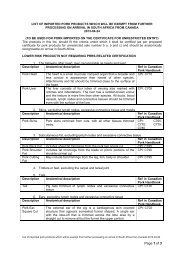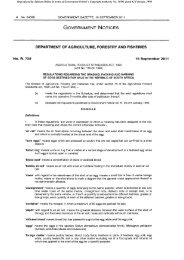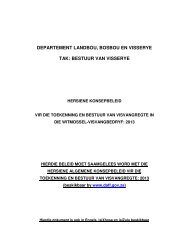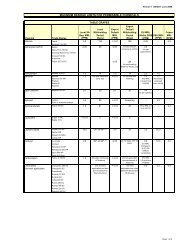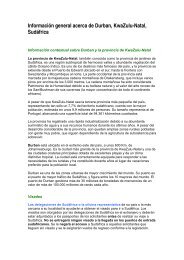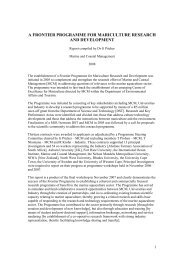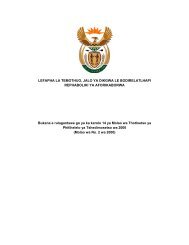You also want an ePaper? Increase the reach of your titles
YUMPU automatically turns print PDFs into web optimized ePapers that Google loves.
O<br />
ctopuses or octopi? Whatever we choose to<br />
call these cryptic cephalopods, the eight-<br />
armed octopus is among the most sophisticated of<br />
all invertebrates and a key player in the food webs<br />
of most marine ecosystems.<br />
Octopuses, together with squids, cuttlefish and nautiluses,<br />
are cephalopods – members of a class which forms part of<br />
the phylum Mollusca. The cephalopods represent the peak of<br />
molluscan evolution and, with finely-tuned sensory organs and<br />
complex nervous systems, they are thought to be the most<br />
highly developed of all invertebrates. Unlike other cephalopods,<br />
octopuses have no shell at all and have abandoned a swim-<br />
ming life. They are bottom-dwellers that spend most of their<br />
time hidden in holes which they defend against other octopuses.<br />
Octopuses move in two different ways. They may pull them-<br />
selves along by attaching their suckers to rock faces or, like<br />
other cephalopods, they swim by means of jet propulsion. Their<br />
mantles are strong and muscular and, by exhaling water from<br />
the mantle cavity through the funnel, they are able to effect a<br />
form of jet propulsion. When escaping from predators, octo-<br />
puses will shoot ink out of their funnel, rapidly change their<br />
colour and escape to a hole where they can hide. The ink blocks<br />
the predator’s ability to see or smell the escaping octopus.<br />
C O A S TA L A N D M A R I N E L I F E – A N I M A L S : I N V E RT E B R A T E S – M O L L U S C S<br />
Octopus 3B<br />
Octopuses are able to change their colour very rapidly by<br />
expanding or contracting their chromatophores – cells in their<br />
skin that contain pigment. Each chromatophore is operated<br />
by a ring of radiating muscles so that the animals can change<br />
their colour, and blend in with their environment, almost<br />
instantaneously.<br />
The common octopus – Octopus vulgaris<br />
The octopus’ characteristic eight arms are equipped with<br />
suckers which are arranged in two rows along each arm. The<br />
arms are joined by a web which extends about a quarter of<br />
their length. At the centre of the web is the octopus’s parrot-<br />
like mouth. This tough beak comprises an upper and lower<br />
jaw and is used to tear at the flesh of prey items. Vital<br />
organs, such as the gills, gonads and digestive system are<br />
contained in the octopus’s mantle or hood which is situated<br />
in the pouch behind the animal’s eyes.<br />
Thirteen species of octopus occur in South African waters.<br />
The most common, Octopus vulgaris, grows to a length of<br />
1,5 m and is often caught by bait collectors who use lures<br />
resembling crabs to bring the animals out of their holes. It is<br />
distinguished from a rarer species, Aphrodoctopus schultzei,<br />
by having two rows of suckers on each arm, rather than<br />
alternate rows. Aphrodoctopus schultzei has brush-like tips to<br />
the arms. The giant octopus, Octopus magnificus, is regularly<br />
caught by bottom trawlers on the south coast. It can grow to<br />
a length of 3 m and reach a maximum weight of 25 kg.





